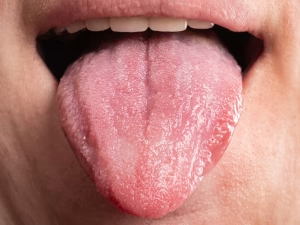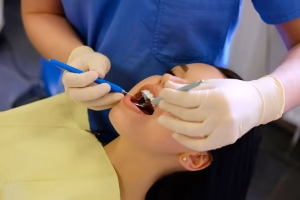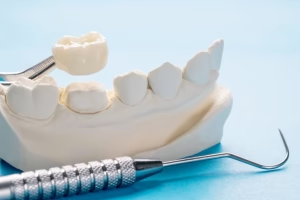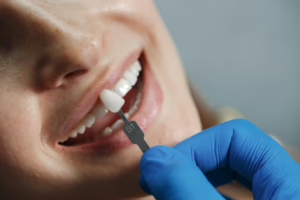Gum Lift Procedure – How to Fix Too High or Too Low Gums
13 November 2020
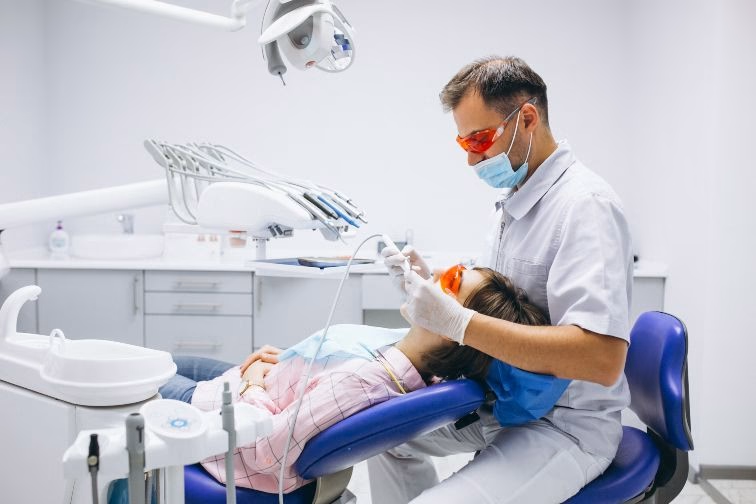
Whenever people think about dental care, the first thing that pops to mind is preventing cavities in your teeth.
Yet gum health is equally crucial. In fact, things can go south without proper treatments. Think gummy smile, uneven gums, bleeding, gum disease, even tooth loss.
But our goal is not to scare you. Enter gum contouring – a simple cosmetic procedure that turns that frown upside down.
In this article about oral health education, we will address all the burning questions about gum contouring as well as steps you can take to fix any gum-related issues.
What Is Gum Contouring?
Gum contouring is a dental procedure that reshapes and adjusts your gum line. Gum contouring is most commonly done for cosmetic purposes. However, there are cases when such corrective procedures serve strictly health-related purposes.
Gums or gingivae are composed of soft tissues which envelop the teeth, ensuring they are kept steadfast in the mouth. Ironically, these SOFT tissues are rather thick.
A healthy smile has a coral pink appearance along the lip line with varying hues depending on the pigmentation of the individual. This procedure may help you to preserve a more natural smile and even gums. But if you have, say periodontal disease, gum reshaping may be a viable treatment option.
Luckily, many of today’s dentists and periodontists (gum specialists) are quite capable of performing the gum contouring procedure. But before making any decisions, best to make a consultation appointment with your doctor and set up a thorough treatment plan, especially if young children require dental care.
Your dentist or periodontist essentially has two ways to approach the issue:
- Traditional technique – This involves cutting away extra tissue with a dental scalpel and exposing more tooth structure. This can be a rather invasive procedure, one which will likely require a local anesthetic.
- Laser gum contouring procedure – Cosmetic dentistry has come a long way with the use of laser technology. The entire gum recontouring process is virtually painless – great for reshaping a gummy smile.
The length of the procedure may vary from several minutes to about 1 to 2 hours, depending on the size of the area that needs contouring, tooth size, and general condition of the patient’s gums.
What Causes An Uneven Gum Line
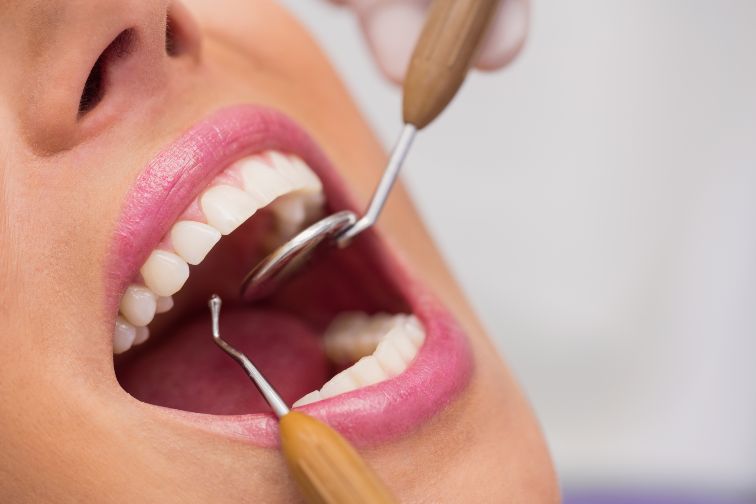
Several things can cause your gum line to be either too high or too low.
Gums that cover a substantial portion of your teeth may cause them to look small. This may be a result of poor oral health or genetics or both. Excess gum tissue may also be a side effect of prescription medications, inflammation, swelling, or gum disease.
Gums that are too high, thus making your teeth seem unusually long are usually caused by gum recession. It is a condition in which gum tissue recedes from the crown, gradually revealing the tooth’s root in the process. Yikes!
To be perfectly candid, gum recession may become a rather serious issue if left unattended. It can lead to severe dental problems, such as tooth decay or worse, loss of your tooth.
Sometimes, gum recession may also be a symptom of later stages of periodontal disease. Since this disease can lead to deterioration of the supporting teeth structure, just keep in mind the old adage: prevention before correction.
The Gum Lift Surgery
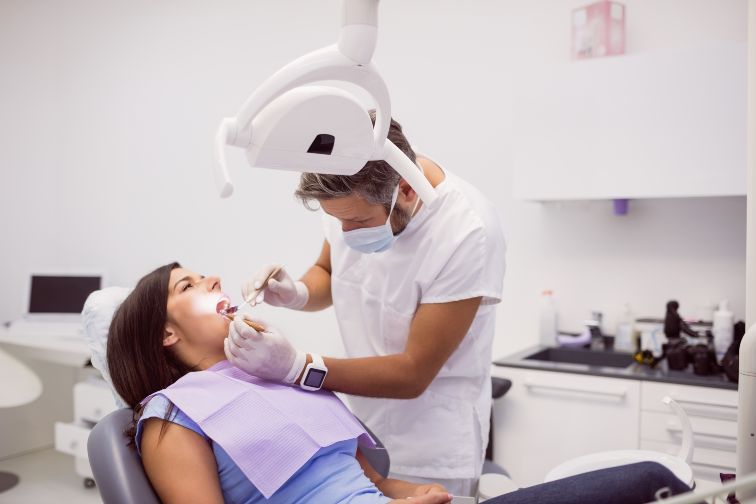
As the name implies, gum lift (also known as gingivectomy) is a corrective dental procedure that serves to lift and reshape your gums. Gum lift procedure includes reshaping the tissue and/or underlying bones, ensuring your teeth look long and symmetrical.
Too much gum
If you have excess gum tissue, a simple gum lift surgery will probably do the trick. With today’s cosmetic dentistry, you can simply outline the new line of your gums with your dentist. And how do we do that exactly?
Well, dentists nowadays rely on a computer-generated mock-up of your gums and teeth, which is perfect for envisioning brand-new smiles. Once you are satisfied with the gum line outline, the dentist will set up a date for your gum contouring session.
On that day, the dentist may also decide to directly mark lines onto your gum, just to be doubly sure as to how much gum needs to be eliminated.
Upon receiving a local anaesthetic, your periodontist or dentist will use a precise laser to shape your dream smile. Simple as that! The procedure usually takes a couple of minutes, depending on the severity of the case.
In some circumstances, though, gum contouring may not suffice, so patients might ought to consider crown lengthening. This is when gum and/or bone is removed to reshape the line of the gums. Yes, the recovery process may take a bit longer compared to other smile makeovers, but quality results are guaranteed.
Too little gum
A gum graft, also known as a gingival graft, is a procedure that corrects receding gums.
Gum recession and excessive gum tissue require rather similar procedures. Only instead of eliminating gum tissue, the dentist now adds it. To do so, the dentist or periodontist will use the patient’s tissue (usually palate) or a donor tissue to fashion a more appealing appearance.
Besides keeping your gum showing, this procedure also helps to preserve the root of your tooth from decay.
Gum Contouring Recovery

Ready for your gum contouring before and after photos?
Well, on the day of the surgery, it is important to be well-rested and reduce your activities. It can take a couple of days or even weeks for your gums to recover fully. Your dentist will provide you with proper advice about what you need to do to keep the healing process on a steady course. Here are some common tips to get you through the recovery period:
- Ease your dental pain by taking drugs prescribed by your dentist. Do not take aspirin as it dilutes blood, which may exacerbate any bleeding.
- 2 to 3 days after the procedure, try and eat soft foods. Think soups, yogurt, cottage cheese, pasta, soft vegetables, eggs, and let’s not forget our favorite – ice cream!
- Avoid spicy foods and seeds until you have recovered completely.
- Follow your doctor’s advice on how and when to brush your teeth.
Should you, however, notice any sign of extreme swelling or bleeding, call your dentist asap.
Gum Contouring Risks
Every surgery and procedure carries a certain risk, and gum contouring is no exemption. Although chances are slim, the potential risks the procedure can cause include:
Summary
Gum contouring isn’t the most pleasant of experiences. There will be some discomfort, yes, but only for a little while. There’s no reason to bury your head in the sand. Come next visit to the dentist and your teeth and smile will likely thank you for your courage.
So if you feel you aren’t satisfied with the way your gums and teeth look, why not give your trusted dentist a call? Our duty is to help you decide if gum contouring surgery is the right solution for you, both in terms of health and beauty.
Also, keep in mind that the result of the surgery depends entirely on the skill and experience of the doctor. So do not shy away from asking your dentist about his or her background in cosmetic dentistry. We love talking about ourselves every now and then.





